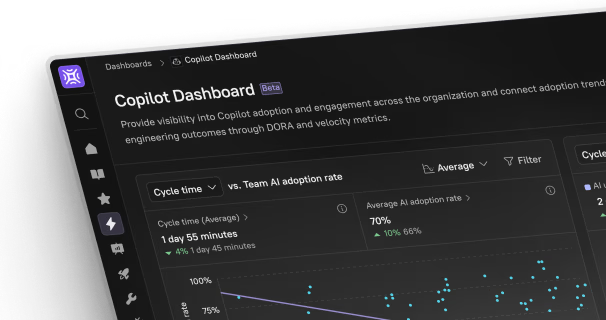In an increasingly digitized society, the concept of e-government has evolved from buzzword to a cornerstone of modern governance. Short for “electronic government,” it represents the use of digital tools—particularly the internet and related technologies—to provide public services, communicate with citizens, and streamline internal operations across government agencies.
This article unpacks everything you need to know about e-government, from real-world benefits to potential drawbacks, public opinion, FAQs, and even industry insights from Tamer Badr, owner of Singleclic, a leader in government tech solutions.
Want to help your city or country take the leap into efficient public service delivery? Learn more at Singleclic’s Government Solutions.
What Is e-Government?
e-Government, or electronic government, refers to the application of information and communication technologies (ICTs) to deliver government services to citizens (G2C), businesses (G2B), and other arms of government (G2G).
Rather than relying solely on physical offices, forms, and manual processes, e-government platforms allow for:
- 24/7 access to services
- Improved transparency
- Automated workflows
- Data-driven decision-making
From filing taxes online to applying for business permits digitally, the scope is vast.
People Are Always Asking: Why Should We Care About e-Government?
That’s a fair question. And the answer is simple: it makes life easier.
Tamer Badr, CEO of Singleclic, explains it best:
“e-Government isn’t just about convenience. It’s about dignity. People should not have to spend their day in queues to receive their rights.”
According to The World Bank, e-government has the potential to increase citizen satisfaction, reduce corruption, and boost government accountability.
Top Benefits of e-Government Services
- Accessibility
- No need to travel or wait in line. Services can be accessed anytime, anywhere.
- No need to travel or wait in line. Services can be accessed anytime, anywhere.
- Efficiency
- Tasks that used to take weeks (like renewing licenses) can be completed in minutes.
- Tasks that used to take weeks (like renewing licenses) can be completed in minutes.
- Cost Savings
- Less paper, less postage, fewer employees needed for routine tasks.
- Less paper, less postage, fewer employees needed for routine tasks.
- Transparency
- Real-time status updates, audit trails, and easier access to public records.
- Real-time status updates, audit trails, and easier access to public records.
- Economic Development
- Makes it easier for businesses to comply with regulations, stimulating growth.
- Makes it easier for businesses to comply with regulations, stimulating growth.
Use Cases of e-Government in Action
- Estonia’s e-Residency: Allows anyone in the world to start and run a company in Estonia 100% online.
- Dubai’s Smart Government: Offers over 600 services via a unified digital platform.
- India’s Digital India program: Includes e-Hospital portals and online education.
Public Reviews: What Citizens Are Saying
“Renewing my driver’s license used to take a whole day. Now it’s just 10 minutes online. That’s life-changing.”
— Nour, Cairo
“I used the municipal app to report a pothole. It was fixed in two days. That’s never happened before!”
— Daniel, Johannesburg
“Finally, I can track my passport application online without calling anyone.”
— Anna, Warsaw
Potential Drawbacks to Keep in Mind
Despite its appeal, e-government has its limitations and challenges. Here’s a candid look:
1. Digital Divide
- Not all citizens have internet access or digital literacy.
- Solutions: Offer in-person digital help centers or hybrid models.
2. Cybersecurity Risks
- With personal data online, systems are vulnerable to breaches.
- Solutions: Implement strong encryption, two-factor authentication, regular audits.
3. Bureaucratic Resistance
- Government employees may resist tech change due to fear of job loss.
- Solutions: Retraining programs and inclusion in the design process.
4. High Upfront Costs
- Digital infrastructure requires heavy initial investment.
- Solutions: Long-term planning, phased rollout, public-private partnerships.
Tamer Badr on the Future of e-Government
“We’re not just digitizing old forms; we’re redesigning the entire citizen experience. Imagine a mother in a rural village registering her child’s birth with a smartphone app instead of traveling 200 kilometers. That’s the future we’re building at Singleclic.”
How Governments Can Get Started
Here’s a practical checklist for public sector leaders:
- ✅ Identify services citizens use most frequently
- ✅ Start small with digitization pilots
- ✅ Partner with local tech firms like Singleclic
- ✅ Prioritize security and data privacy
- ✅ Gather feedback and continuously improve
Frequently Asked Questions
Q1: What is the difference between e-government and digital government?
Answer: E-government focuses on digital services; digital government expands to include data analytics, AI, and integrated policymaking.
Q2: Is e-government only for national-level services?
Answer: No. Municipal and local governments can digitize services like waste collection schedules, local taxes, and building permits.
Q3: What happens if a system crashes?
Answer: Good platforms have backup servers, offline capabilities, and SMS alternatives for critical tasks.
Final Verdict: Is e-Government Worth It?
Absolutely—but only if it’s done right.
Tamer Badr sums it up perfectly:
“e-Government must be inclusive, secure, and built with empathy. Technology alone isn’t the answer; how we use it defines the outcome.”
Key Takeaways
- e-Government makes public services faster, cheaper, and more transparent.
- Barriers like the digital divide and cybersecurity must be proactively addressed.
- Public opinion is overwhelmingly positive when the implementation is smooth.
- Governments can start small and scale fast with the right partners.
References
- World Bank – E-Government Overview: https://www.worldbank.org/en/topic/digitaldevelopment/brief/e-government
- United Nations E-Government Survey: https://publicadministration.un.org/egovkb









